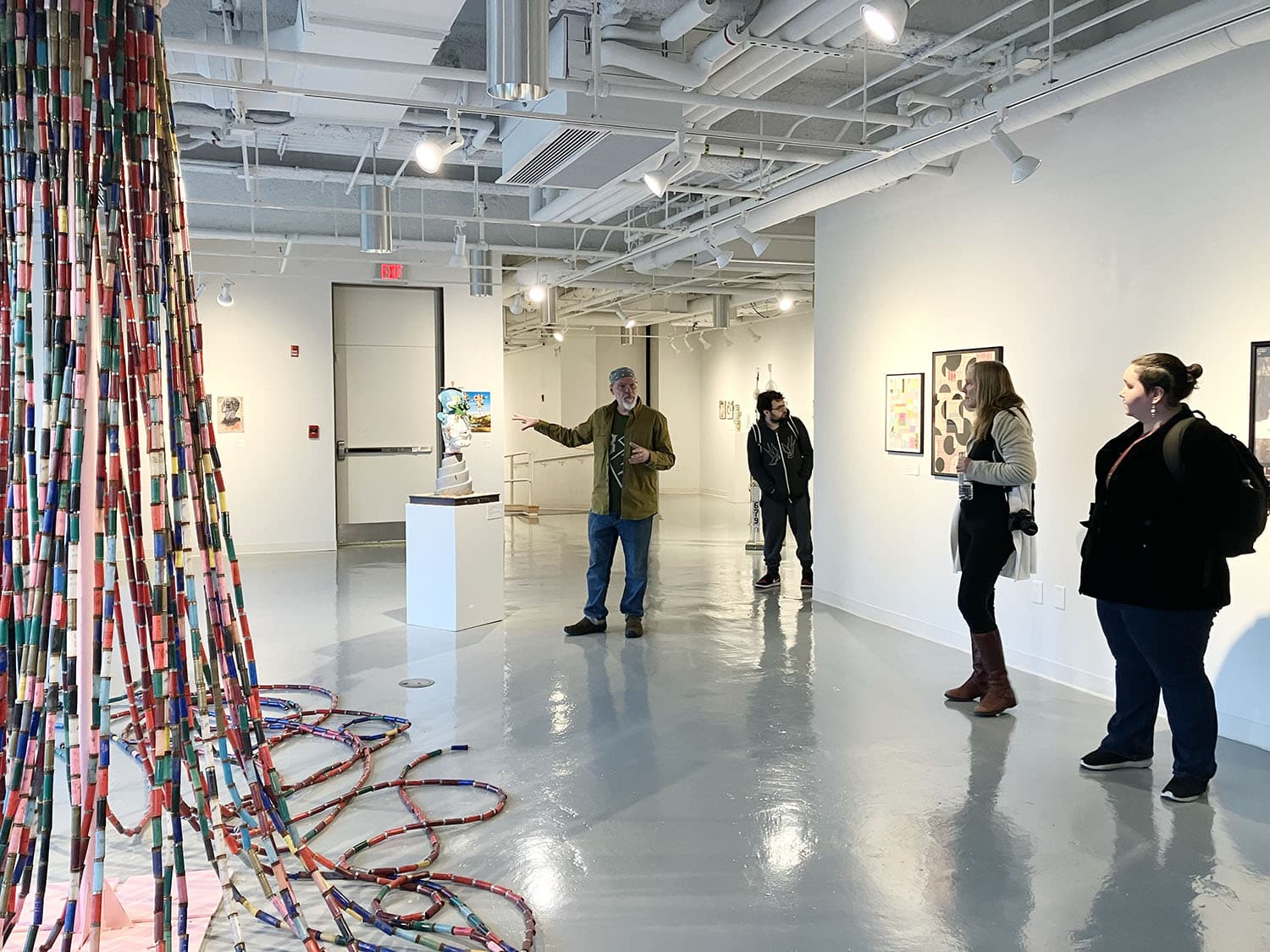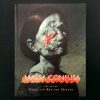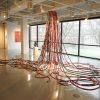The curators of Altered Logistics, an exhibition exploring Contemporary Collage and Appropriation Art, initiated an email conversation to discuss the show, their experiences, and the ideas shaping their approach to collage. Let’s dive into the conversation..
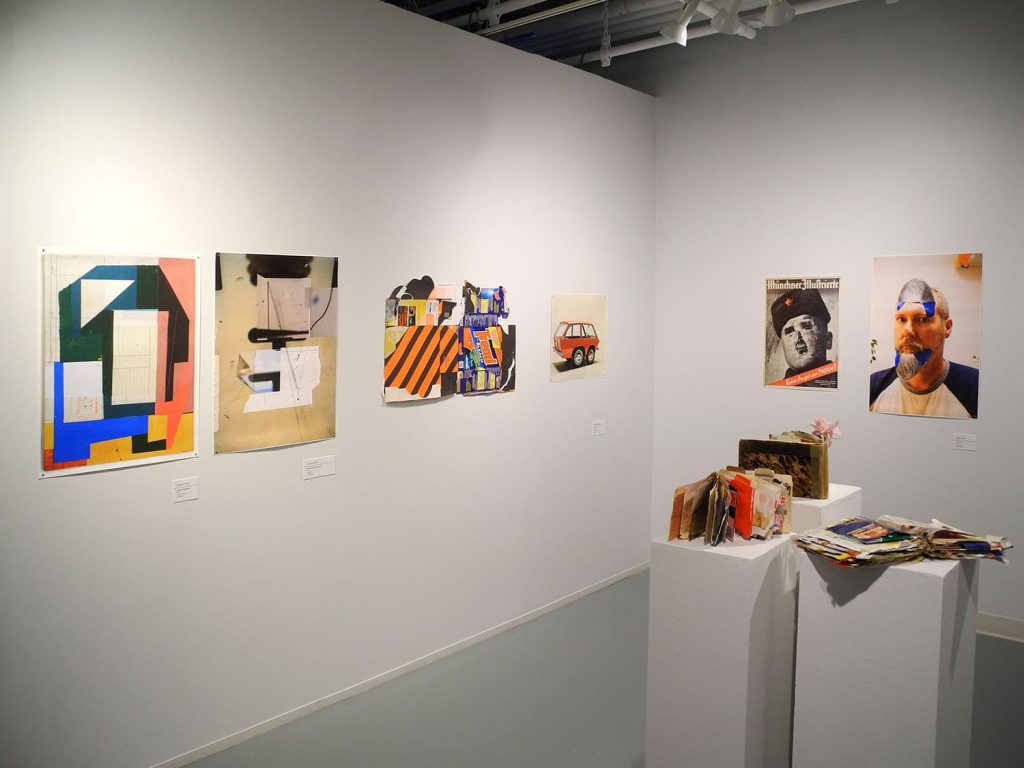
MT –Hey Dominick, I’m super excited about the opportunity to work with you co-curating a show. But I’m curious about something. Why did you approach me to co-curate a collage show with you? What were you expecting to find from my end and from TWS?
DDL –Well Max, the main and most important reason is your passion for collage, and your ability to see the big picture. You made me realize that collage is ubiquitous, a way of thinking and conceiving in the creative process. Now more than ever, much of what we see and hear in every type of media is essentially collage.
What was it that got you so interested in collage?
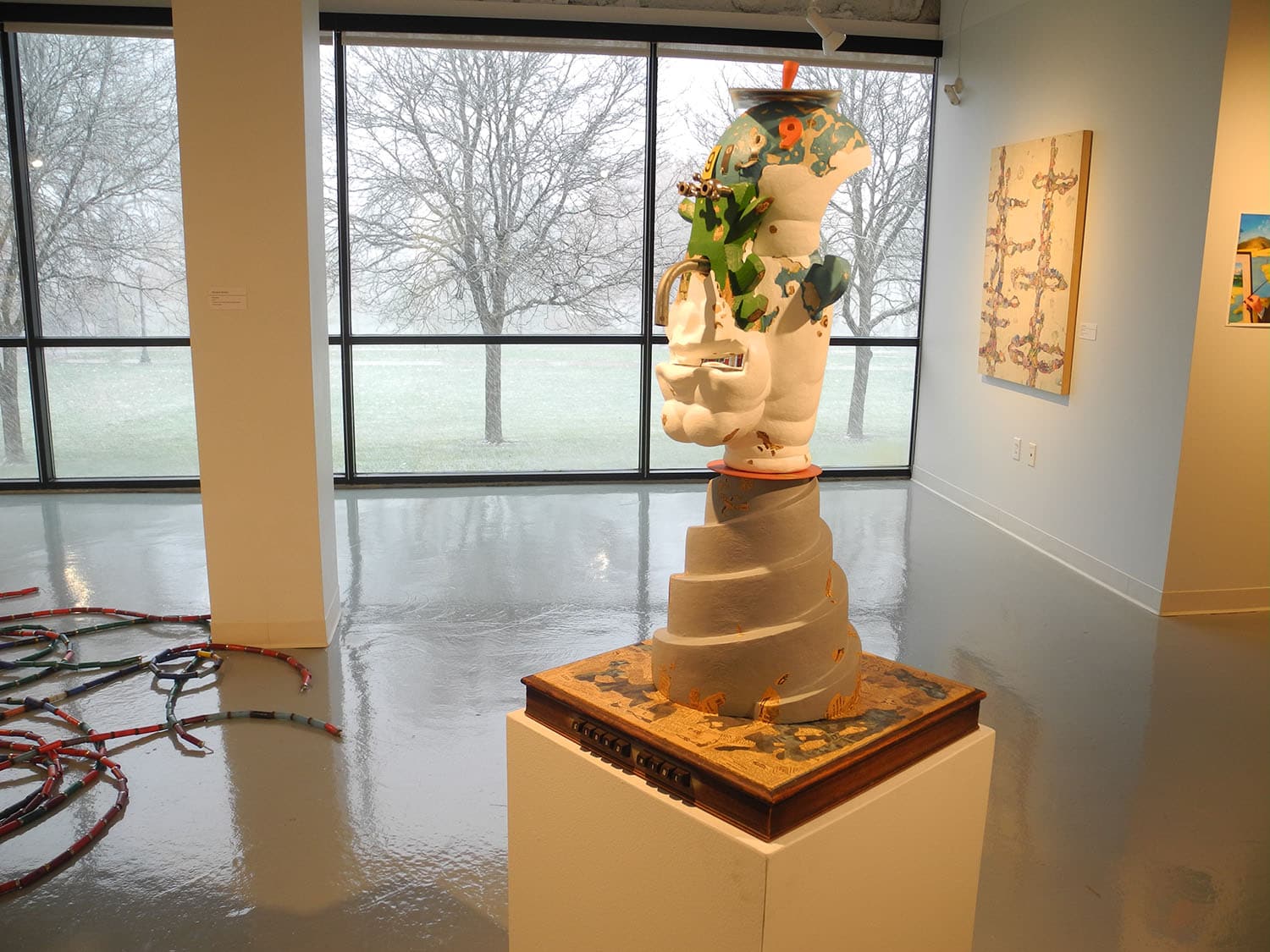
CC 135 (Cloud Nine) (2022)
wood, papier-mâché, gesso, acrylic, acrylic medium, Plexi, 1908 newspaper bits, computer keys, metal, plastic, 1967 magazine page bits
37 ½ x 17 ½ X 17 inches
MT –It’s good to read that you feel I see the big picture, because I’m so into tiny details that I feel sometimes I’m losing some perspective.
I stumbled into the world of collage through fanzines, driven by a desire to write. Collage just felt like the right fit, thanks to my influences from punk rock, skateboarding, and various subcultures. The transition from words to images led me down the rabbit hole of Dada and Surrealism, and suddenly, I was more into assembling visuals than crafting sentences. It’s a journey that took its time, but things always take me years, even though I’m quite impatient, it’s never fast for me. That’s my life.
You told me that you curated your first exhibition in the 70s. How was your experience curating shows back then and how is it different from curating Altered Logistics?
DDL –In those days everything was much more complicated. I first looked at slides or did studio visits, or artists brought work to me to see. I opened a gallery in 1978 in a small town just north of NYC to create another option for artists to show, both from the surrounding area and NYC. I sold that business in 1985. Now, the digital world is so accessible, and the quality of images is so high that most of my curatorial process is done online. However, I still make the occasional studio visit and I see a lot of art when I am writing reviews, especially in Chelsea.
What about you, how do you see the curatorial process today and what are some of the things you are looking for when selecting work? Maybe talk about works for Altered Logistics.

MT –In comparison to when you first started, it appears that things are easier today because everything is online. However, I suppose that in the digital realm, we lose a crucial aspect of that gut feeling you experience when a piece of art speaks directly to you. Yet, this is the reality of today’s art scene, so there’s probably no use in attempting to turn back time. Although, I should make an effort to attend more real-life shows to recapture some of the excitement that I don’t often find in digital media, especially on social platforms.
When I’m scouting for artists, be it for any show or specifically for Altered Logistics, my quest is always in the intersections where collage intersects with other artistic mediums. I have a soft spot for artists who wield paper and traditional collage techniques (given that I dabble in paper myself), but what truly gets my creative juices flowing is discovering individuals who may not identify with collage or don’t see their work as such. Yet, they incorporate a kind of collage “logic” or logistics.
It’s the moments when I encounter an artist, uncertain if they’re in the realm of collage, yet sensing a manipulation of context, meaning, materials, and a process transforming smaller parts into a cohesive whole—that’s when my interest is piqued. Whether I end up liking it or not, it undeniably grabs my attention.
So, my approach to curating a show (even though I don’t hold the title of a proper curator with the extensive curatorial background found in cultural institutions) involves probing the boundaries of collage as an art form. I aim to expand those limits by incorporating adjacent practices that inject new elements into the sometimes rigid, classic notion of collage.
What about your approach to selecting artists for this show? What did you want to exhibit in Altered Logistics?
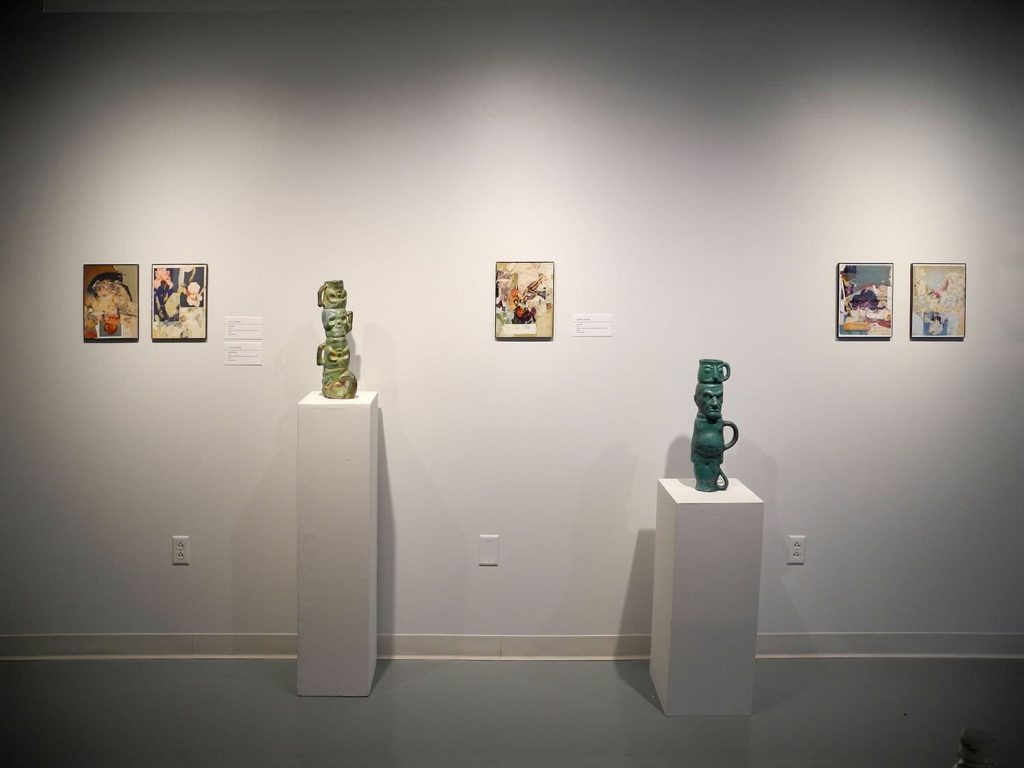
DDL- My general approach to curating is organic. I look at the theme and parameters as you do, and try to cover as many possible interpretations as possible so the exhibition will have something for everyone to connect to. Once you get visitors to feel like they ‘get it’, they will take the time to walk through the exhibition more carefully. For Altered Logistics, I focused on artists like Moses “Hoskins Books of Debris,” because he was making a comment on life in the city and the behavior of its inhabitants. Someone like Creighton Michael worked for me because his idea of collage is very conceptual. In both instances, I was looking for the stretch of the concept. As we were both putting forward our selections, I felt that there was a natural synergy, a visceral experience that created excitement and enlightenment. The world of collage is constantly expanding and it is a great feeling to be involved on some level.
Who were some of your first selections and how did those artists direct your later choices for the exhibition?
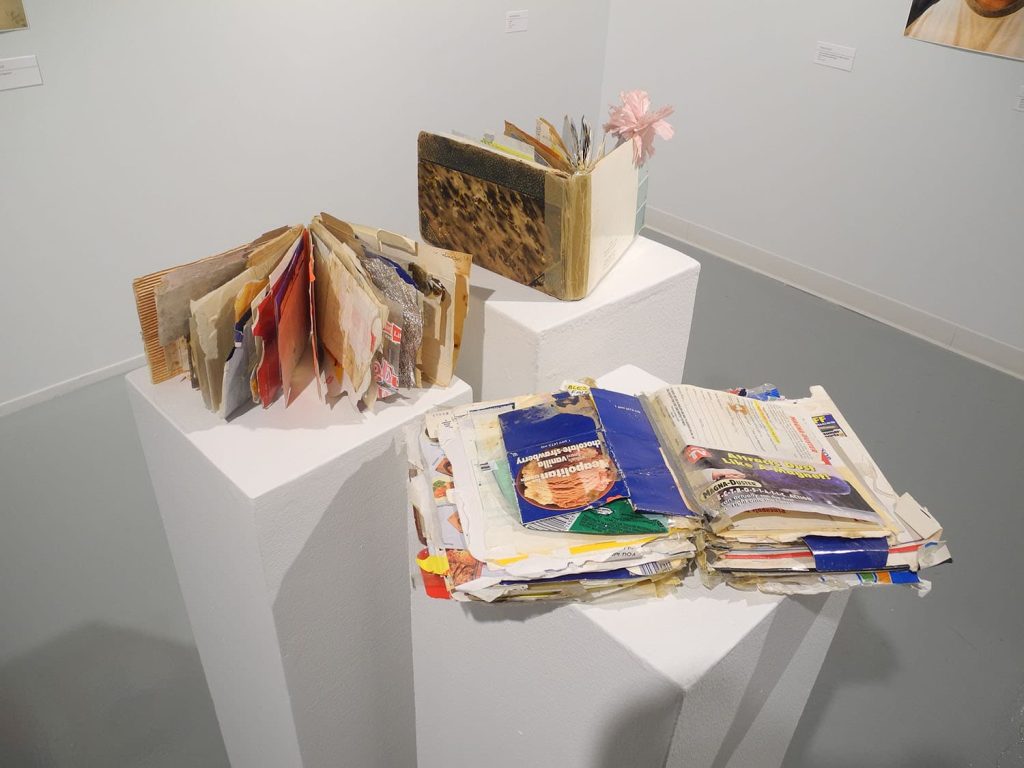
Untitled (book of debris #1, #2, #3) (1995-98)
Collected debris
MT –My initial picks usually lean towards personal favorites or artists whose work I’m eager for people to discover. For this particular show, Miko Hornborg was among the first artists on my list. His work has this otherworldly quality, and despite his seemingly traditional approach, his art is anything but typical collage.
Another standout for an international exhibition was Ashkan Honarvar. He’s been delving into AI experimentation, bridging the gap between the digital and the tangible. Ashkan crafts images with AI, prints them, and then uses these digital-born creations to construct handmade collages. The fusion of the digital and physical realms has always fascinated me deeply.
Pablo Serret de Ena was also a must-have from the early stages of selection. His film “Useless Opera Singers” is a mesmerizing blend of visuals and concepts. Sharing this piece with a broader audience felt like an incredible opportunity.
Other artists that were on the top of my list were Cless, Stratco Artist, Alvaro Naddeo, John Whitlock or Paul Henderson. They all represent different ways of approaching art through the lens of collage. The list kept on growing while I tried to cover different techniques, conceptual approaches and themes to have a wide variety of work.Also I was very curious about which artists would be selected from your side. And when I got your selection I was truly amazed. Artists such as Margaret Roleke, Tobias Fike, Jules Berger and Moses Hoskins… loved their work and are a great counterpoint to some of the artists I selected.
Living in Barcelona, I couldn’t see the exhibition in real life. Can you describe to me the feeling of walking through it and seeing all the work installed there?
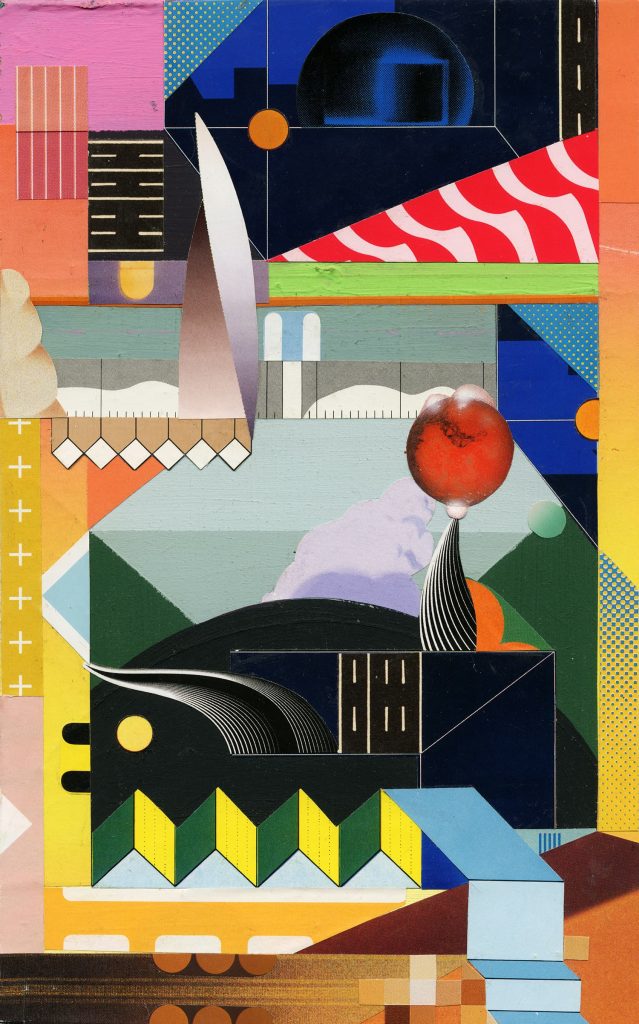
The Spaces In Between (2023)
Paper Collage
8,6 x 13,8 inches
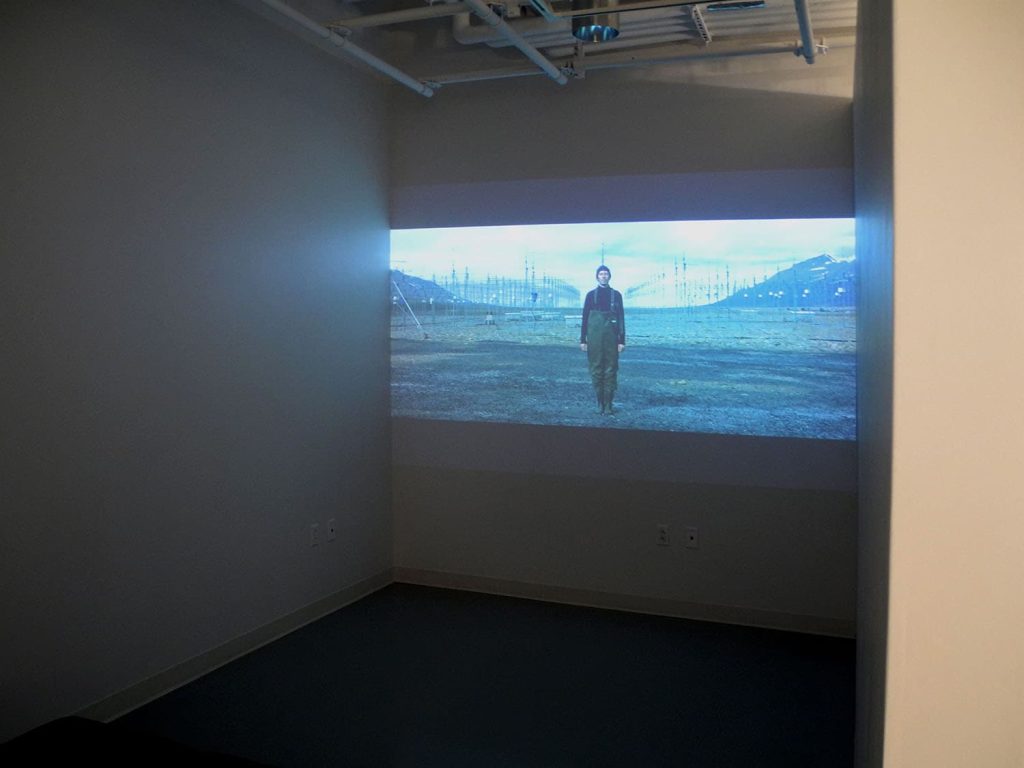
Useless Opera Singers (2021)
Video, 29 min.
DDL- The exhibition feels like a discovery process, how the contrasting work between someone like Daisy McGowan, who uses a string to feature flowing, cut-out forms is thin paper suggesting movement, something akin to “Nude Descending The Staircase,” to Joel Carreiro’s careful tiling of image transfers that create a weighty presence of art historical references, to the selection of the very Surreal videos on display that give viewers such a broad spectrum of references. It’s about how that blend of interpretations, the idea of ‘collage’, converges with digital collage, the three dimensional work and the analog collage, that it all leaves you with a very well rounded experience that has no end. The overall effect is very liberating.
I think about that a lot when I curate, getting people to look, think, and expand their concept of what it means to be creative.
Do you get that kind of feedback from your audiences from your website and exhibition?
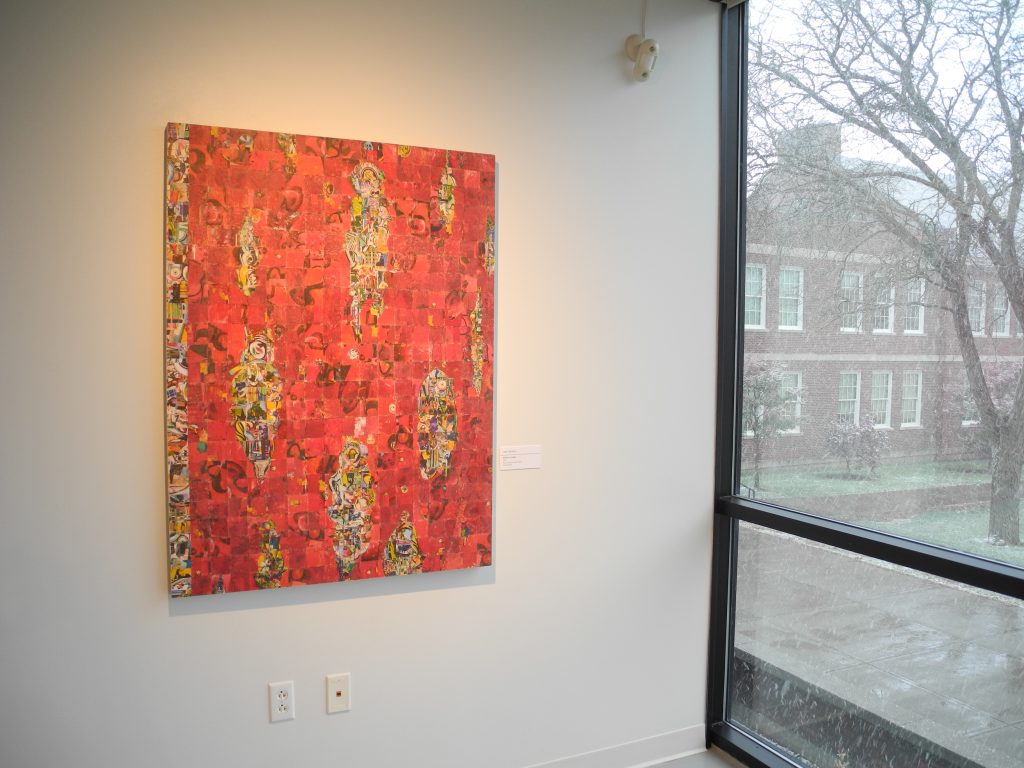
Nabokov’s Puddles (2023)
Heat transfer on birch panel
48 x 36 inches
MT –I think that what you have described is what I was aiming for when thinking about this exhibition, thinking about how each artist from the line-up adds something different to the show. I realise that we complemented ourselves in a great way 🙂
Yes, I receive feedback regarding The Weird Show’s work. During exhibition openings, people are genuinely excited by what they see and are eager to explore “new approaches” to collage. Additionally, online, there is a consistent appreciation for the effort put into examining collage from an analytical perspective and exploring it from various angles.
The challenge lies in whether The Weird Show effectively conveys a clear message and has a well-defined audience. This uncertainty sometimes makes me wonder if the feedback, while positive, doesn’t always translate into the kind of dialogue I’ve always envisioned. We’re not focused on producing academic content, yet we’re not merely an image repository for enjoying “nice collage.” We often find ourselves in a middle ground that can be challenging to connect with. The Weird Show is undeniably “weird” in various aspects.
While there are numerous platforms that serve the role of “promoting” collage as a means to encourage creativity and art creation, this has not been the core objective of The Weird Show over the years. What I’ve been attempting with The Weird Show (although unsure if I’ve succeeded) is to invite and assist individuals interested in art and collage to approach this medium in a different way. This involves transitioning from the dominant discourse influenced by Picasso, Braque, Dada, and Pop Art to a more contemporary perspective that reflects the complexity of collage as a way to engage with our cultural reality.
I know it’s a pretty huge goal for such a tiny platform… but I can’t go back in time to fix this 😛
I think that my last question is to know your take, after all these years that you’ve been making art, curating shows, writing about art. Why do you think collage is relevant in 2023?
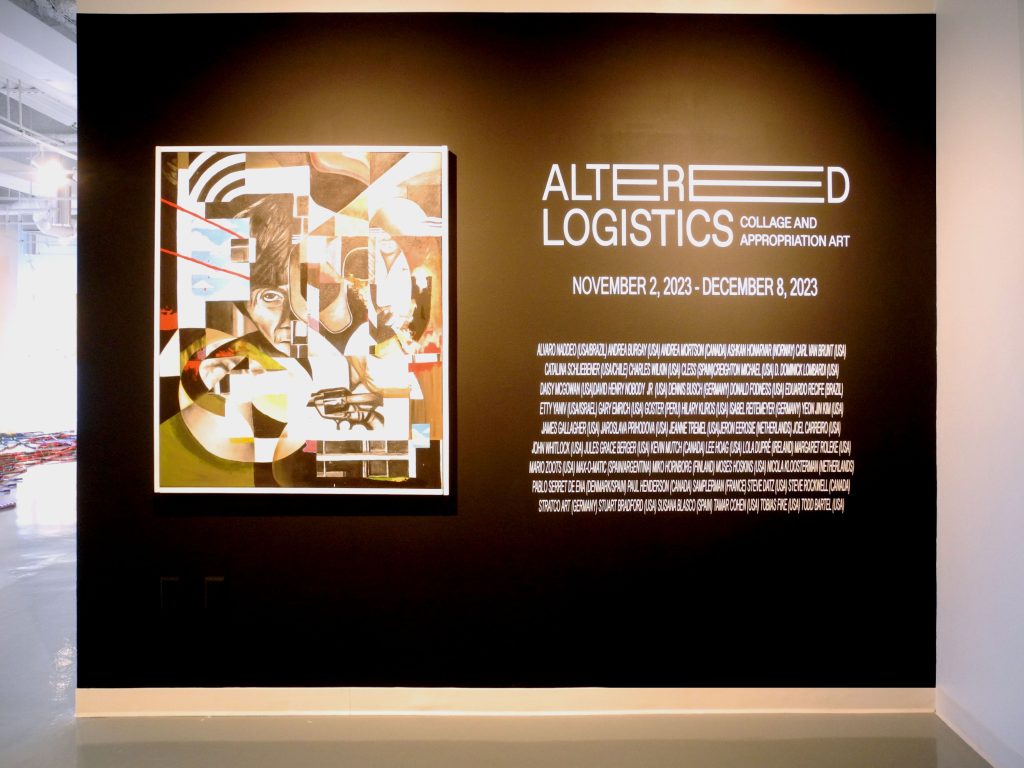
DDL- It is relevant because it lines up with the way the world is today. We receive too much stimuli from all different sources and angles – from the of past, present and future moments, projections, beliefs and untruths – all coming in too quickly to fully grasp. Collage taps into that because the narrative is so easily made nonlinear and open-ended. There are all these parallel and non-parallel things happening around us and collage can grab enough of it to capture the insanity. A collage artist can also focus on just two key elements and create an equally compelling image as something loaded with references. It’s the ability of collage, where you can have very familiar images and make them unfamiliarly out of place and change the very meaning of something. Kind of like a dream that strings together unrelated situations, yet it manages to project a strong feeling of a familiar circumstance.
Altered Logistics: Contemporary Collage and Appropriation Art will be at The Dowd Gallery, SUNY Cortland from October 30 – December 8, 2023.Dowd Fine Arts Center,
48 Graham AV and Prospect Terrace, Cortland, NY 13045
Presented by The Weird Show. Curated by D. Dominick Lombardi (@d._dominick_lombardi_art) and Máximo Tuja (@maxomatic)
Participating artists:
Alvaro Naddeo, Andrea Burgay, Andrea Mortson, Ashkan Honarvar, Carl Van Brunt, Catalina Schliebener, Charles Wilkin, Cless, Creighton Michael), D. Dominick Lombardi, Daisy McGowan, David Henry Nobody Jr., Dennis Busch, Donald Fodness, Eduardo Recife, Etty Yaniv, Gary Emrich, Goster, Hilary Kliros, Isabel Reitemeyer, James Gallagher, Jeanne Tremel, Jeron Eerosie, Joel Carreiro, John Whitlock, Jules Grace Berger, Kevin Mutch), Lee Hoag, Lola Dupré, Margaret Roleke, Mario Zoots, Max-o-matic, Miko Hornborg, Moses Hoskins, Nicola Kloosterman, Pablo Serret de Ena, Paul Henderson, Samplerman, Steve Datz, Steve Rockwell, Stratco Art, Stuart Bradford, Susana Blasco, Tamar Cohen, Tobias Fike, Todd Bartel, Yeon Jin Kim

